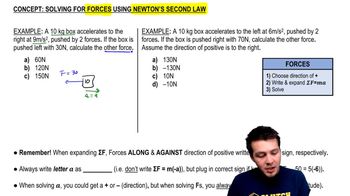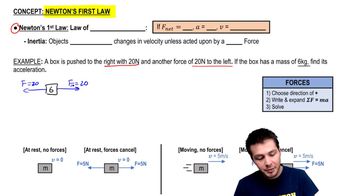Newton's First & Second Laws definitions Flashcards
 Back
BackNewton's First & Second Laws definitions
1/15
Terms in this set (15)
- ForceA push or pull that changes an object's velocity, represented as a vector.
- NewtonThe unit of force in the International System of Units, symbolized as N.
- AccelerationThe rate of change of velocity of an object, influenced by net force.
- MassA measure of an object's resistance to acceleration when a net force is applied.
- Net ForceThe vector sum of all forces acting on an object, determining its acceleration.
- InertiaThe tendency of an object to resist changes in its state of motion.
- VelocityThe speed of an object in a specified direction, remaining constant if net force is zero.
- VectorA quantity with both magnitude and direction, used to represent forces.
- MagnitudeThe size or amount of a vector quantity, such as force or acceleration.
- DirectionThe line or path along which something moves, points, or faces.
- Positive DirectionThe chosen reference direction for vector calculations, typically right or up.
- Newton's First LawAn object remains at rest or in uniform motion unless acted upon by a net force.
- Newton's Second LawThe net force on an object is equal to the mass of the object multiplied by its acceleration.
- Vector AdditionThe process of combining vectors to determine the net force.
- Law of InertiaAnother term for Newton's First Law, describing resistance to changes in motion.



